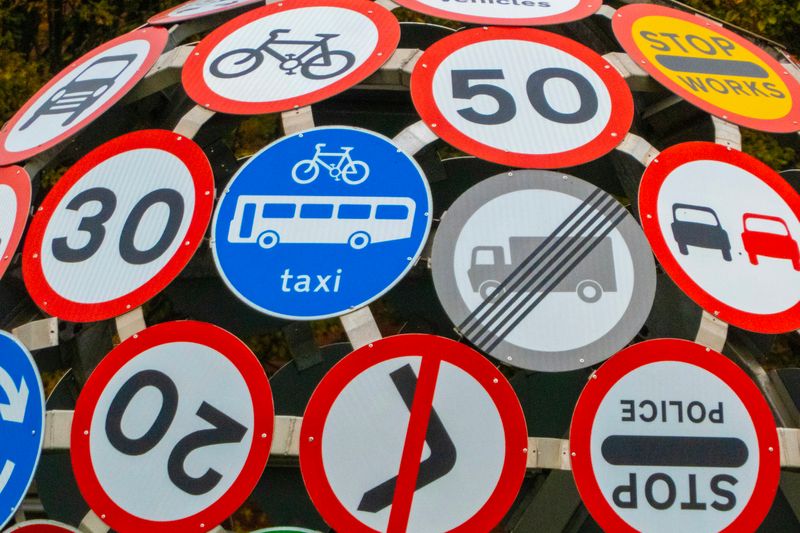Nearly 55% of middle and high schoolers surveyed by the Cyberbullying Research Center reported that they had been cyberbullied at some point in their lives.
 Photo by Francisco Gonzalez on Unsplash
Photo by Francisco Gonzalez on UnsplashAnd around 27% of them said they've been cyberbullied within the last 30 days.
It is a massive and widespread problem, but the good news is there are things you can do to help prevent cyberbullying.
What is Cyberbullying?
Cyberbullying is the use of electronic communication to bully a person, typically by sending messages of an intimidating or threatening nature.
It can happen anywhere online, including social media, gaming platforms, or text messages.
Types of Cyberbullying
Mean comments or messages — Someone might post negative comments about your appearance, interests, or beliefs.
Sharing embarrassing photos or videos — Someone might share a private photo or video of you online without your permission.
Exclusion — Someone might intentionally exclude you from online groups or conversations.
Impersonation — Someone might create a fake account to pretend to be you and spread rumors.
Threats or harassment — Someone might send you threatening messages or repeatedly harass you online.
The Power of Prevention
Cyberbullying is always hurtful and it can have an incredibly damaging impact on the victim. So, it's important to focus on ways to prevent cyberbullying.

Having the knowledge and tools to stop cyberbullying will help you:
Feel empowered and confident in your online interactions. 💪
Gain the courage to stand up for others who might be targeted by cyberbullies. 🆘
Create a safe and welcoming space for everyone online. 🌞
Strategies for Success
These 4 key strategiescan help you become a cyberbullying prevention superhero.
 Photo by Guille Álvarez on Unsplash
Photo by Guille Álvarez on Unsplash1. Protect Yourself Online
The first strategy to prevent cyberbullying is to protect yourself online (as much as possible) and reduce the risk of becoming a victim.
 Photo by Hugo L. Casanova on Unsplash
Photo by Hugo L. Casanova on UnsplashAdjust Social Media Settings:
Regularly review and adjust your privacy settings on all social media platforms to control who can see your posts and personal information.
Make sure only trusted friends can see your detailed information.
Disable location-sharing features unless necessary.
Restrict Profile Access:
Set your profiles to private.
Only approve friend requests from people you know personally.
2. Don't Share Too Much
It's important to be mindful of what you're sending and who you're sending it to.
 Photo by Kristina Flour on Unsplash
Photo by Kristina Flour on UnsplashStranger Danger:
Never share intimate pictures, videos, or chat messages with someone you've only met online. If you'd be embarrassed for your grandma to see it, don't put it in the hands of someone who could spread it all over the internet.
Be careful how much personal information (your location, etc.) you share with online friends.
Be Cautious With Friends:
Even people you know in real life may not always have your well-being in mind.
Don't go through life not trusting anyone, but do remember that friendships can sour and people can act out of spite or revenge.
3. Recognize the Signs
Knowing the early warning signs of cyberbullying is crucial to stopping it.
 Photo by Nick Fewings on Unsplash
Photo by Nick Fewings on UnsplashEarly Signs of Cyberbullying:
Look out for repeated negative messages, comments, or posts directed at you or others.
Pay attention to any sudden changes in online interactions, such as friends being unfriendly or excluding you from groups.
Differentiating Between a Joke and Cyberbullying:
Understand that if a comment or message makes you uncomfortable, it’s valid to consider it potentially harmful. If something someone is doing or saying to you online is distressing you, it's not, "Just a joke!"
Bullying is often persistent and intended to cause suffering, unlike a one-time joke among real friends.
4. Think Before You Post
Finally, make sure you're not part of the problem — even if it's unknowingly!
 Photo by Tachina Lee on Unsplash
Photo by Tachina Lee on UnsplashIn the fast-paced world of online interactions, we can all react impulsively. So, it's especially important to take a moment to think before hitting "send" or "post". Would you say this to someone in person?
Remember, online interactions have no facial expressions or body language to help someone understand the meaning behind your words. So, it's all too easy to inadvertently hurt someone.
Always consider the potential consequences (even the unintended ones) of your actions online.
Quiz
Which of the following are strategies to prevent cyberbullying? Choose all that apply:
You're Not Alone
If you're a victim of cyberbullying, remember that you are not alone! There are many places you can go for help and support. Here are just a few of them:
Provides information on what bullying is, what cyberbullying is, who is at risk, and how you can prevent and respond to bullying.
Offers resources for understanding, preventing, and responding to cyberbullying.
Provides free, confidential 24/7 support for young people in Canada through phone and online counseling.
Offers information on dealing with cyberbullying and how to remove images/videos from the internet.
Offers resources, advice, and support for children, parents, and educators on how to stay safe online.
Provides support and advice on bullying, including cyberbullying, for young people and parents.
Provides resources and support for dealing with cyberbullying and online safety issues.
Offers mental health support, information, and services to young people aged 12-25.
If your country isn't one of those listed above, just Google "help with cyberbullying" to find the organization closest to you.
Take Action

To feel even more confident that you can handle any bullying situation, and to help make a safe online space for everyone:
Your feedback matters to us.
This Byte helped me better understand the topic.





